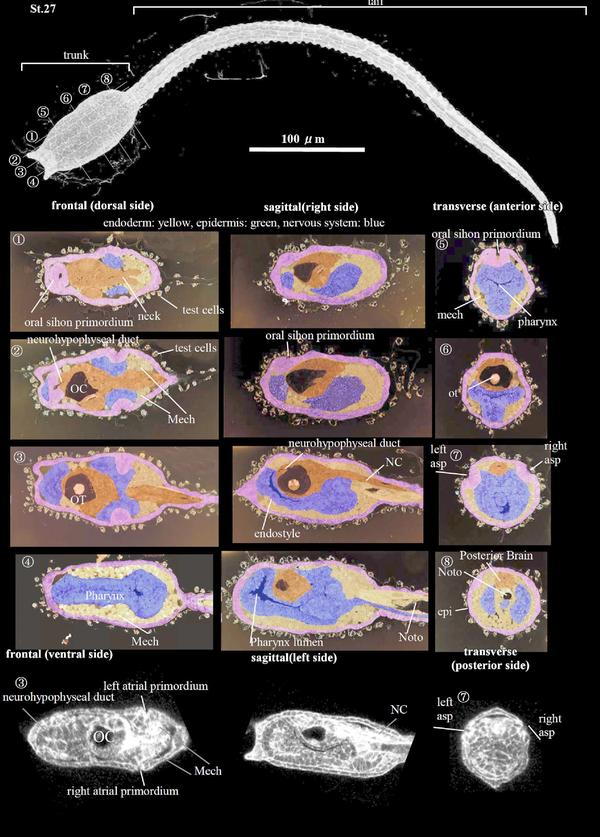
Stage 27
This corresponds to the Early Swimming Larva Stage (CirobuD:0000050; 17.5-20 h). The larva makes regular tail movements while swimming. The trunk elongates along the anterior-posterior axis. The postpharyngeal tract (post pha in Fig. 2CII; CirobuA:0000871) is developing from the posterior pharynx and the endodermal strand (Nakazawa et al., 2013) is histologically recognizable.
The endostyle primordium (CirobuA:0000617), developing from A7.1, A7.2, A7.5, B7.1, and B7.2 cells (Hirano and Nishida, 2000), is recognizable in the anterior pharynx. A wider lumen of the pharynx can be observed. The atrial siphon primordia indent in the posterior lateral trunk epidermis (a7.14 and a7.15 cell lines) (CirobuA:0000916). Mesenchyme cells in the posterior ventral trunk become round. Among sensory structures in the sensory vesicle, the coronet cells (CirobuA:0000890) can also be noted. These cells, forming a hydropressure organ (Imai and Meinertzhagen, 2007; Ryan et al., 2016), are considered by some authors to be the homolog of the vertebrate hypothalamus (Horie et al., 2018; Moret et al., 2005; Parrinello et al., 2020; Razy-Krajka et al., 2012).